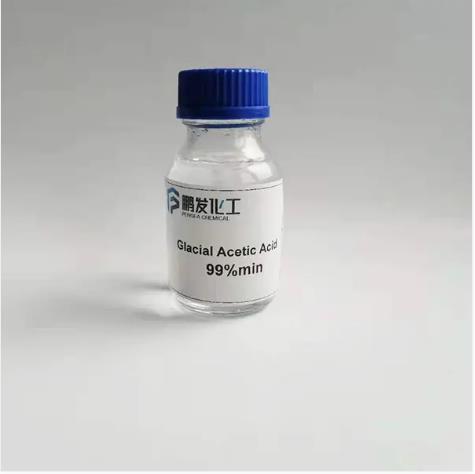Acetic acid, colorless liquid, has a strong pungent odor. The melting point of acetic acid is 16.6 ℃, the boiling point is 117.9 ℃, the relative density is 1.0492 (20/4 ℃), and the refractive index is 1.3716. Pure acetic acid can form an ice-like solid below 16.6 °C, so it is often called glacial acetic acid. Acetic acid is an important organic chemical raw material, mainly used to prepare vinyl acetate monomer (VAM), cellulose acetate, acetic anhydride, terephthalic acid, chloroacetic acid, polyvinyl alcohol, acetate and metal acetate.
Acetic acid is widely used in basic organic synthesis, medicine, pesticides, printing and dyeing, textiles, food, paint, adhesives and many other industries. Acetic acid is an important chemical raw material. The industrialized production technologies of acetic acid mainly include: methanol carbonylation method , acetaldehyde oxidation, ethylene direct oxidation and light oil oxidation. Among them, methanol carbonylation is the most widely used technology, accounting for more than 60% of the total global production capacity, and this trend is still growing.
The global acetic acid production capacity has been showing an upward trend, and its global demand will also grow at an average annual rate of about 5% in the next few years, of which 94% of the global new acetic acid production capacity will occur in Asia, and the Asian region will also be in the future. Leading the rapid growth of global market demand within five years.
application:
1. Acetic acid derivatives: mainly used in the synthesis of acetic anhydride, acetate, terephthalic acid, vinyl acetate/polyvinyl alcohol, cellulose acetate, ketene, chloroacetic acid, haloacetic acid, etc.;
2. Medicine: Acetic acid is used as a solvent and pharmaceutical raw material, mainly used in the production of penicillin G potassium, penicillin G sodium, procaine penicillin, antipyretic tablets, sulfadiazine, sulfamethoxazole, norfloxacin, ciprofloxacin Floxacin, acetylsalicylic acid, phenacetin, prednisone, caffeine, etc.;
3. Various intermediates: acetate, sodium diacetate, peracetic acid, etc.;
4. Pigments and textile printing and dyeing: mainly used for the production of disperse dyes and vat dyes, as well as textile printing and dyeing processing;
5. Synthetic ammonia: in the form of cupric acetate ammonia liquid, it is used as the refinement of synthesis gas to remove a small amount of CO and CO2 contained in it;
6. In the photo: formulation as developer;
7. In terms of natural rubber: used as a coagulant;
8. In the construction industry: it is used as an anticoagulant.
Post time: Aug-09-2022

